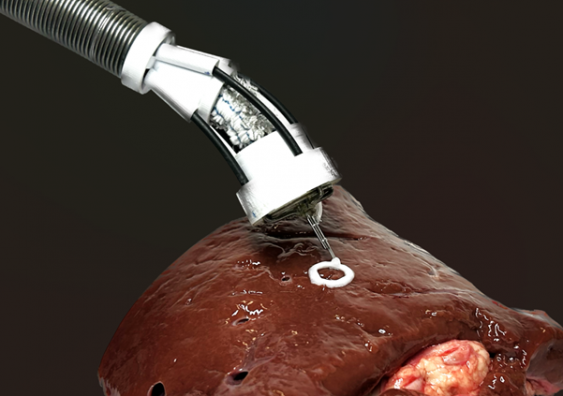A team of researchers from ║┌┴¤═°┤¾╩┬╝à Canberra has developed a new 3D-printed implant that could transform how doctors treat fractures and bone injuries, bringing personalised, biodegradable implants one step closer to reality.
These implants, known as bone scaffolds, are tiny, porous structures implanted into the body to help damaged bone regrow. They act like a temporary framework, giving cells a place to attach, grow, and rebuild tissue. Once healing is complete, the scaffold dissolves safely, removing the need for a second surgery to take it out.
Until now, most scaffolds have used simple, repetitive designs that donÔÇÖt reflect the complexity of real bone. But this new research, led by PhD student Kaushik Raj Pyla, takes a different approach.
The team used stochastic lattice structures, irregular, randomly patterned designs, to better replicate the internal architecture of bone. These were printed using polylactic acid (PLA), a biodegradable polymer commonly used in medical applications. To ensure clean, accurate printing the team fine-tuned print temperature and retraction settings, overcoming common 3D printing issues like sagging and stringing.
ÔÇ£Bone can be damaged in many locations, and its structure changes depending on where it is in the body,ÔÇØ Kaushik said.
ÔÇ£We wanted to see if matching these patterns could help restoration. Our idea was to take existing bone patterns and check if they could be rebuilt through printing.ÔÇØ
Media enquiries
For media enquiries about this story and interview requests, please contact┬áLibby Moorhead,┬á║┌┴¤═°┤¾╩┬╝à Canberra.
Tel: 0404 917 377
Email: libby.moorhead@unsw.edu.au
To test their idea, the researchers created scaffolds with different internal grading directions, such as lengthwise, across, and diagonally, and examined how each design responded to stress. They found that the scaffolds performed significantly better under sudden impact than under slow pressure, absorbing energy quickly and showing different fracture patterns depending on the design.
ÔÇ£Under fast loads, the material acts more brittle, but it also absorbs energy more efficiently. This is important for real-world scenarios like falls or accidents,ÔÇØ Kaushik explained.
Beyond mechanical strength, the scaffolds also showed promising results in fluid permeability, which is crucial for healing. Fluids like blood and nutrients need to flow through the scaffold to support cell growth and tissue regeneration.
ÔÇ£We found that certain designs performed especially well in both strength and fluid flow. This suggests that implants can be tailored depending on the stresses different bones experience,ÔÇØ Kaushik said.
ÔÇ£And with 3D printing, scaffolds can be customised to match the patient and injury.ÔÇØ
The need for innovative bone repair solutions is especially urgent in regions like the ACT, where poor bone health affects more than 98,000 people. In 2025 alone, the territory is expected to see more than 2900 fractures, with direct healthcare costs exceeding $73 million, a report from Healthy Bones Australia has outlined.
ÔÇ£These figures highlight the growing burden of osteoporosis and fracture-related injuries ÔÇô and the importance of developing safer, more effective treatments like the 3D-printed bone scaffolds,ÔÇØ said Kaushik.
While the technology isnÔÇÖt ready for clinical use just yet, the researchers are optimistic. Biological testing, long-term studies, and regulatory approvals are still needed. The team is also exploring how these designs could be adapted for┬ácartilage and soft tissue scaffolds and see early clinical testing within five years.
ÔÇ£Biodegradable scaffolds will likely play a key role in reducing both medical risks and overall treatment costs,ÔÇØ Kaushik added.
ÔÇ£WeÔÇÖre moving toward safer, more personalised implants that work with the body, not just in it.ÔÇØ








